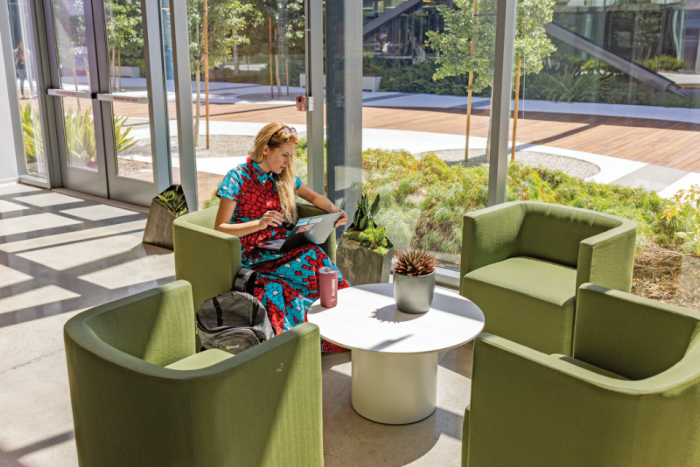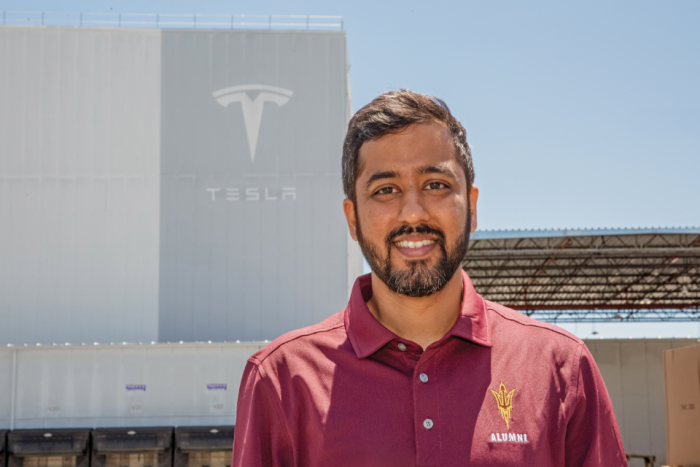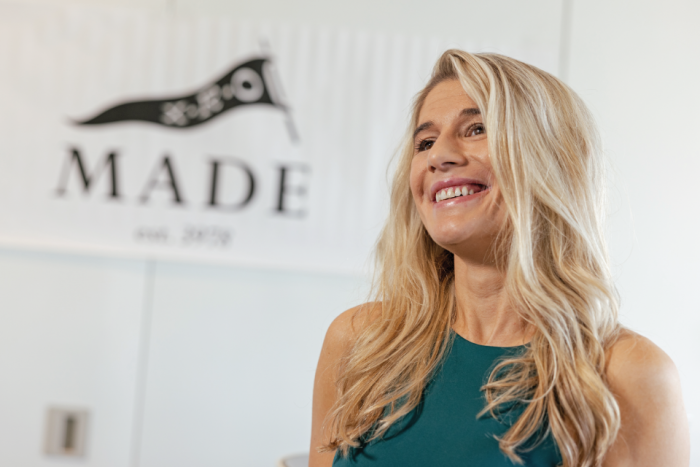Tech phenoms
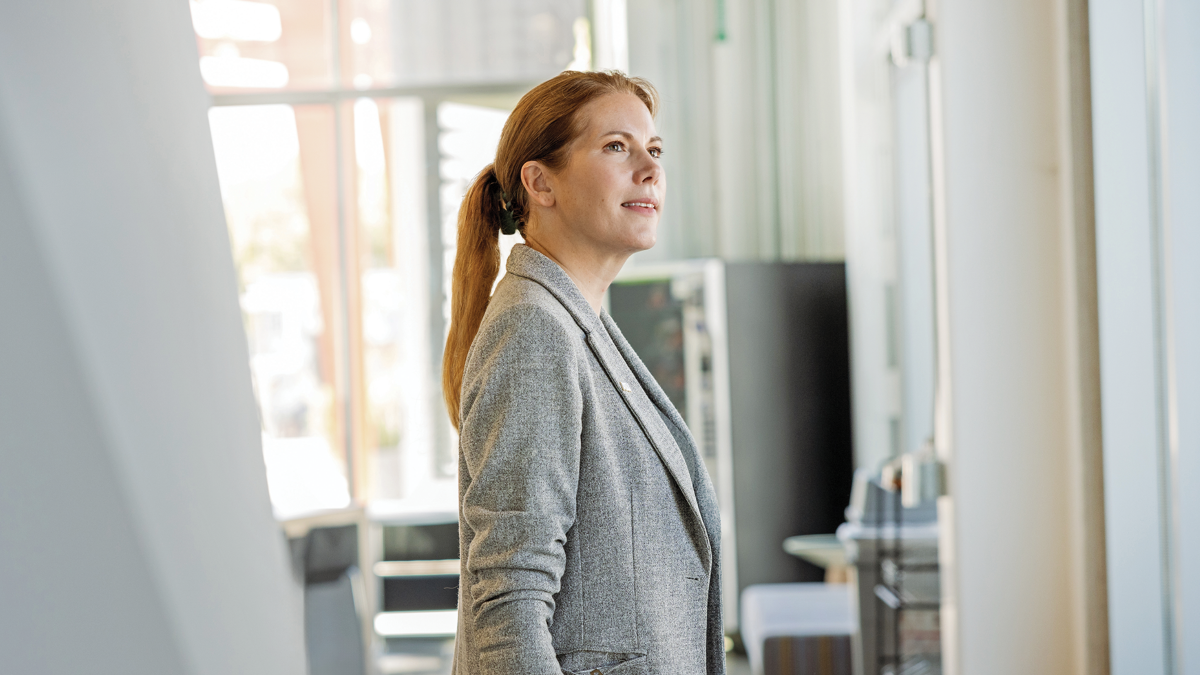
Shannon Fitzpatrick, ’22 DBH, senior health care strategic partner development manager at Microsoft, Global Partner Solutions and Global Disability Employee Resource Group lead. Photo by Sabira Madady
Story by Carolyn Said
Editor's note: This story originally appeared in the fall 2024 issue of ASU Thrive magazine.
Thriving in technology company culture is a tall order, requiring creativity, dynamism, adaptability — and extensive tech skills.
Here’s a look at the career paths of four alumni leading in cutting-edge tech jobs. All structured their work lives and education for maximum success, with an eye to their ultimate career goals and the future evolution of their chosen areas.
The visionary
Shannon Fitzpatrick, ’22 DBH, in Los Angeles, California
Senior health care strategic partner development manager at Microsoft, Global Partner Solutions and Global Disability Employee Resource Group lead
Shannon Fitzpatrick, ’22 DBH in behavioral health, saw the future. Behavioral health was poised to explode, with one of seven people identifying as having a disability. Despite a proliferation of health-tech apps, she noticed an absence of solutions for behavioral health. She had spent years combining her interest in health with her affinity for technology and wanted to continue integrating them. So she decided to earn a doctorate in behavioral health at ASU while continuing to work in a strategic role at Microsoft.
Fitzpatrick had an impressive array of degrees — an MBA in international business, an MS in computer science, and a BA in disability studies — when she pursued the ASU doctorate through ASU Online.
The program and degree, combined with her experience in the field, helped her become a subject matter expert at Microsoft for behavioral health, she says.
Fitzpatrick has been involved in disability studies since her undergraduate days. In addition to hands-on work with people with disabilities, she hosted and produced a TV show called “Accessibility Toronto.” Fifteen years ago, while working at Salvation Army Social Services with persons with disabilities, her passion for technology led her to be the IT go-to and she has since made a career of integrating health care with tech.
Today, Microsoft and other cloud providers are investing heavily in mental health solutions.
Fitzpatrick manages five of Microsoft’s strategic health care partners. As a partner development manager, she builds and nurtures relationships with health care-focused software partner organizations to drive mutual success and growth within the partner ecosystem. She says that her Doctorate in Behavioral Health, combined with her past BA in disability studies, equips her with a comprehensive understanding of mental health issues, behavioral considerations and strategies for supporting employees with disabilities. This is critical for leading Microsoft’s Disability Employee Resource Group, fostering inclusivity and addressing unique employee needs.
My doctorate helped me become a subject matter expert at Microsoft for behavioral health. It enhanced my credibility as a leader within the company.
Shannon Fitzpatrick’22 DBH
The disruptor
Garvit Khandelwal, ‘17 MS, in Palo Alto, California
Staff data engineer at Tesla in the vehicle engineering group leading a multidisciplinary team
Garvit Khandelwal,’17 MS in computer science, has always aspired to work for the best, innovate and learn how things work. That led him to go back to school even though he worked at Ericsson, one of the world’s largest telecommunications companies.
“After a hackathon at Ericsson, I found I was passionate about large datasets. But I felt like I did not have the skill set to do it yet. I lagged in the theoretical knowledge and the math. ASU had the perfect coursework for it as well as research labs.”
While at ASU, he applied for an internship at Tesla, and he says the real-life projects he worked on at ASU wowed his Tesla recruiters. Those projects included building a video-search tool, classifying music based on genres, discerning patterns in social media and detecting misinformation.
“When I applied for Tesla, Tesla was one of the biggest disruptors at the time; they were working on technologies and electric cars that were not common. And it has had a big impact on the environment and the air we breathe. And then Tesla’s approach was scrappy; you get to learn a lot in a short amount of time,” he says.
“I could accelerate my career faster.”
After starting as an intern at Tesla five years ago, he grew into his current role in the vehicle engineering group where he works on car acoustics, leading a small multidisciplinary engineering team. His team develops solutions to detect and diagnose acoustic issues, such as noise, vibration and harshness.
Khandelwal interacts with factory and service teams, discusses and designs new features with other engineers, experiments with new models and does a lot of coding.
He says all that collaboration requires advance planning, including designating responsibilities so everyone doesn’t try to solve the same problem.
“The thing that I love the most is that my job allows me to work on really difficult problems that are very multifaceted in terms of the engineering challenges,” he says.
The master learner
Nikhil Aravind, ’16 MS, in San Diego, California
Senior software engineer at Netflix; he leads a team that develops large-scale designs
Nikhil Aravind, ’16 MS in computer software engineering, is a coder par excellence. Additionally, he has worked hard to hone his communication skills. That helps him navigate a large organization. As a senior software engineer at Netflix, Aravind and his team develop large-scale designs and implement, test and release them.
He first realized that communication is vital while doing a research project on autonomous driving at ASU.
“I reached out to a lot of folks within the industry to get insights, information, improve my communication and presentation skills,” he says, “to be sure you’re presenting what people want to see.”
Aravind chose ASU because of its focus on innovation and holistic approach to software engineering and development.
“I didn’t want to go to college to learn how to code in a specific language or how to build one app specifically,” he says.
He has flourished in his career.
Netflix culture “provides a lot of freedom and responsibility to its engineers,” he says.
But joining Netflix is not easy.
“Landing a job at Netflix is highly competitive,” he says.
How did he earn a spot at Netflix? It started with Aravind’s first job after graduation as a software engineer at a startup making lead generation tools for insurance companies, combined with his drive to always keep learning and aiming high.
From there, he went to Sony PlayStation, where he worked for almost seven years. It was a dramatic change, going from a company where 600 people used the tools he built to one where the audience numbered 500 million. There, he was part of the team that launched PlayStation 5.
Moving to Netflix was a way to challenge himself.
“At Netflix, you’re free to make any decision that is in the company’s best interest,” he says. “So it’s not just about engineering. It’s more about owning the entire process. The degree at ASU taught me how to look at software engineering as part of the whole life cycle.”
The entrepreneur
Madison VanLeeuwen, ’14 BA, in Los Angeles, California
CEO and founder of AI firm MADExro. Playing big: from cybersecurity expert to AI visionary, leading the cutting edge
Madison VanLeeuwen, ’14 BA in business, was a small-town California girl, the child of teenage parents and the first in her generation to attend college. An entrepreneur at heart, she took the leap to go out of state to study at ASU. A forward thinker, VanLeeuwen has built an impressive career in cybersecurity and AI.
“Protecting the digital world isn’t just a job; it’s an adrenaline rush,” she says. “Each cyber threat is a new puzzle to solve.”
Given her inner drive and growth mindset, it’s only fitting that she currently holds not one but two full-time jobs in AI and cybersecurity. In one of them, she is the founder and CEO of MADExro, a boutique consultant agency that leverages AI to drive business outcomes and revenue growth, where she builds custom-tailored AI solutions herself. In both jobs, she devises go-to-market strategies, builds sales teams and guides enterprise clients.
After she graduated from ASU, and after 18 months of pounding the pavement, she was invited to the RSA Cybersecurity Conference in San Francisco. With $30 in her pocket, she made the drive from Southern California, walked the floor and landed her first job in cybersecurity.
As she moved her way up, “Shark Tank” star and entrepreneur Robert Herjavec recruited her as the second employee at his U.S. company. There, she worked hand in hand with Herjavec, guiding the team, and growing the company from two to over 1,000 employees.
During that time, she had early access to some of the first iterations of the top AI tools on the market today. Immediately drawn to the art and science, she began building algorithms and custom GPTs to automate mundane tasks. From there, she founded her company, MADExro.
“Success in entrepreneurship begins with the courage to set audacious goals and the determination to take risks,” she says. “My journey while at ASU further instilled that playing small was never an option and going big has been my compass ever since.”
Carolyn Said is a reporter for the San Francisco Chronicle; she covers how society, business, culture, education and other institutions are changing.
More Science and technology
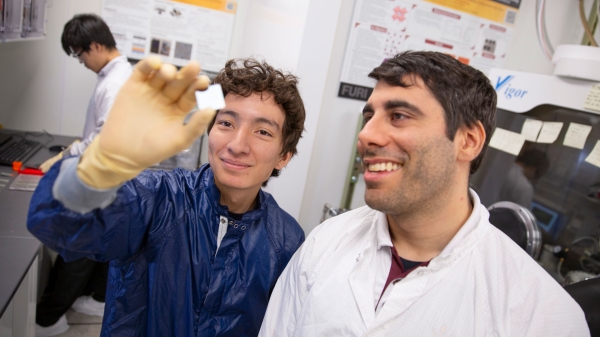
ASU student researchers get early, hands-on experience in engineering research
Using computer science to aid endangered species reintroduction, enhance software engineering education and improve semiconductor material performance are just some of the ways Arizona State…

ASU professor honored with prestigious award for being a cybersecurity trailblazer
At first, he thought it was a drill.On Sept. 11, 2001, Gail-Joon Ahn sat in a conference room in Fort Meade, Maryland. The cybersecurity researcher was part of a group that had been invited…

Training stellar students to secure semiconductors
In the wetlands of King’s Bay, Georgia, the sail of a nuclear-powered Trident II Submarine laden with sophisticated computer equipment juts out of the marshy waters. In a medical center, a cardiac…
